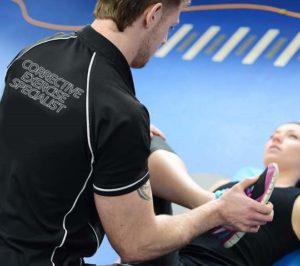Research shows that 90% of people report painful and limiting musculoskeletal conditions that affect the success of their workouts.4 As a result, health fitness professionals are becoming educated about musculoskeletal assessments, movement analysis and corrective exercise to help both themselves and their clients feel and function better. It’s no wonder that the field of corrective exercise is booming! There are many benefits of being a corrective exercise specialist and integrating these strategies into your client programs. Learn about these distinct advantages and how The BioMechanics Method is helping health and fitness professionals and their business flourish.
Benefits of Being a Corrective Exercise Specialist
 More Clients Will Want To See You: Latest research indicates the number one reason people seek the help of a fitness professional is to assist them with muscle/joint pain.4 Simply put – if you are qualified to address these problems, you will attract more clients.
More Clients Will Want To See You: Latest research indicates the number one reason people seek the help of a fitness professional is to assist them with muscle/joint pain.4 Simply put – if you are qualified to address these problems, you will attract more clients.
Increased Revenue: Having a sought-after specialty qualification in corrective exercise has been shown to increase your income by at least 20% and as much as 50%.1
Knowledge of Effective Assessments: When a client comes to you with pain or complains of pain during their workout, you can take a strategic and active approach to assessing and correcting the underlying cause of their problem. No more turning away clients because you don’t know how to help them.
Proven Methods Work: The corrective exercise strategies contained The BioMechanics Method Corrective Exercise Specialist (TBMM-CES) certification have been used by health and fitness professionals to help clients all over the world and produce unbelievable results.
You Can Design Better Workouts: A better understanding of functional anatomy and movement not only helps you assist clients in alleviating muscle and joint pain, but it also enables you to design exercises that are overall more effective. This means you can create high-performance programs for weekend warriors and professional athletes too.
Client Results Are Accelerated: Injuries, pain and movement dysfunction limit the types and intensity of workouts clients can perform. Helping clients feel better so they can perform better, both in and out of the gym, lets them realize goals sooner.
Keeps Clients Coming Back: When clients get injured, or start to feel pain as a result of exercising while out of alignment, they drop out of fitness programs. Addressing your client’s alignment issues, muscle imbalances and movement dysfunction at the outset of their program decreases the likelihood they will experience pain or injuries, and ensures they can continue working with you.
Increases Word of Mouth Referrals: The ability to successfully help clients get out of pain and achieve their goals is marketing gold. Satisfied clients will confidently refer friends, family and colleagues to you for help. Being a qualified and reputable corrective exercise specialist can also generate networking opportunities with health professionals who need a trusted, practical fitness professional to whom they can refer patients.
Get Ahead at Work: Latest research indicates that advanced qualifications such as a CES credential weigh heavily in an employer’s decision when looking to promote a staff member.2
Edge Out Your Competition: Statistics show that 89% of clients are looking for a fitness professional to help them alleviate their aches and pains, yet only 56% of personal trainers and exercise professionals offer corrective exercise services.4 The knowledge and skills you obtain by earning a corrective exercise qualification will provide you with a major competitive edge in the fitness arena.
The BioMechanics Method Corrective Exercise Specialist Certification course (TBMM-CES) is the fitness industry’s highest-rated corrective exercise specialist certification. Click on the image below to learn more about this revolutionary program.
References:
1NASM. 2015. Annual NASM-CPT Survey. Chandler, AZ: National Academy of Sports Medicine.
2National Federation of Personal Trainers, 2012. www.nfpt.com
3Price, J. 2018. The BioMechanics Method for Corrective Exercise. Champaign, Illinois: Human Kinetics.
4Schroeder, Jan., and Donlin, Ayla. 2013. IDEA Fitness Programs and Equipment Trends Report. IDEA Health & Fitness Association.
